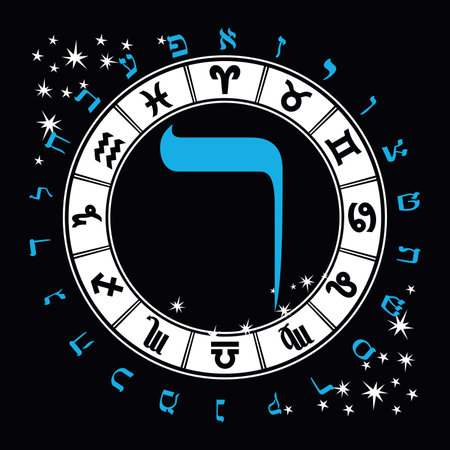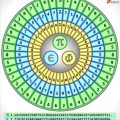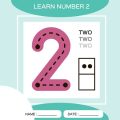1. Introduction to Tarot and Oracle Decks
Tarot and oracle decks have become increasingly popular tools in American spiritual communities, offering insight, guidance, and reflection for people from all walks of life. While they are often used for similar purposes, these two types of card decks have distinct origins, structures, and uses. Understanding the differences between tarot and oracle decks is essential for anyone interested in exploring modern divination or personal growth practices.
Origins and Historical Background
Tarot decks date back to the mid-15th century in Europe, originally created as playing cards before evolving into a tool for spiritual exploration and fortune-telling. They typically follow a fixed structure with established symbolism rooted in Western mysticism.
Oracle decks, on the other hand, are a more recent development. Their origins are less standardized, emerging from a variety of spiritual traditions and creative expressions. Oracle decks do not adhere to any set number of cards or themes, allowing creators more freedom in design and message.
Purpose and Common Uses
| Tarot Decks | Oracle Decks | |
|---|---|---|
| Main Purpose | Insight, self-reflection, structured readings | Guidance, inspiration, flexible readings |
| Typical Users | Those interested in tradition and symbolism | People seeking intuitive or themed messages |
| Number of Cards | 78 (Major & Minor Arcana) | No set number; varies widely by deck |
| Reading Style | Structured spreads with specific meanings | Flexible layouts; creator-defined meanings |
| Cultural Influence in America | Popular among tarot enthusiasts and traditionalists | Loved by those who want personalized or non-traditional guidance |
The Role of Tarot and Oracle Decks in Modern American Spirituality
In contemporary American culture, both tarot and oracle decks are used for personal development, meditation, journaling prompts, group readings, and even as part of therapy sessions. Some people use them to connect with their intuition or explore life questions without the need for rigid dogma or religious structure. Social media platforms like Instagram and TikTok have also fueled their popularity by making card pulls a daily ritual for many Americans seeking self-care practices that feel accessible and meaningful.
2. The Structure of Tarot: Major and Minor Arcana
When people talk about Tarot decks, they’re usually referring to a specific structure that’s been around for centuries. Understanding how a traditional Tarot deck is put together helps you get the most out of your readings. Let’s break down the two main parts: the Major Arcana and Minor Arcana, plus their suits and court cards.
Major Arcana: The Big Picture Cards
The Major Arcana consists of 22 cards, each packed with symbolism and meaning. These are often seen as the “headline” cards in a reading because they represent major life themes or events. You’ll find iconic names like The Fool, The Magician, The Lovers, and Death. Pulling a Major Arcana card can feel like getting a message about something bigger than day-to-day life—think personal growth, big changes, or important crossroads.
Major Arcana Highlights
| Card Number | Card Name | Main Theme |
|---|---|---|
| 0 | The Fool | New beginnings, adventure |
| I | The Magician | Manifestation, willpower |
| VI | The Lovers | Relationships, choices |
| XIII | Death | Transformation, endings and new starts |
Minor Arcana: Everyday Life in Four Suits
The Minor Arcana has 56 cards split into four suits. Each suit represents a different aspect of daily life, kind of like playing cards but with deeper meaning and unique symbols. Here’s a quick rundown:
| Suit | Symbol/Element | Main Focus |
|---|---|---|
| Cups | Water | Emotions & relationships |
| Pentacles (Coins) | Earth | Money & career |
| Swords | Air | Thoughts & communication |
| Wands (Rods) | Fire | Passion & creativity |
Court Cards: People and Personalities in the Deck
Each suit in the Minor Arcana has four “court” cards: Page, Knight, Queen, and King. These often represent people in your life or aspects of your own personality. For example, a Queen of Cups might point to someone nurturing or emotionally supportive.
A Quick Look at Court Cards in Each Suit:
- Page: Messengers or young people; new beginnings in that area of life.
- Knight: Action-takers; movement and pursuit of goals.
- Queen: Nurturing energy; mastery over emotions or skills.
- King: Leadership; control and authority within the suit’s theme.
This classic structure is what sets Tarot apart from oracle decks—and gives each reading its special layers of meaning and insight.

3. Oracle Decks: Structure and Flexibility
Unlike Tarot cards, Oracle decks are known for their open-ended and highly customizable nature. There is no set structure or official rulebook that defines how Oracle decks should be created or used. This flexibility allows deck creators to explore all kinds of themes, meanings, and artistic directions, making Oracle decks incredibly diverse and personal.
How Oracle Decks Differ from Tarot
| Tarot Decks | Oracle Decks | |
|---|---|---|
| Structure | Standardized (78 cards: 22 Major Arcana, 56 Minor Arcana) | No standard; card count varies widely |
| Themes | Traditional archetypes & suits | Open to any theme (e.g., angels, animals, self-care) |
| Meanings | Established interpretations for each card | Creator-defined meanings; can be simple or complex |
| Use in Readings | Often follows specific spreads and rules | User decides how to use the cards; very adaptable |
Flexible Card Numbers and Formats
An Oracle deck can have as few as a dozen cards or over a hundred. The creator chooses how many cards to include based on the deck’s purpose and theme. For example, a self-love Oracle deck might feature 44 unique affirmations, while an animal spirit deck could showcase 50 different animals. This freedom lets users pick decks that really resonate with their personal interests and needs.
Themes and Imagery: No Limits!
Whereas Tarot decks follow traditional suits (like Cups or Swords) and well-known archetypes (like The Fool or The Lovers), Oracle decks can focus on anything imaginable. You’ll find Oracle cards centered around topics like gratitude, moon phases, positive habits, mystical creatures, or even pop culture icons.
User Experience: Personalization at Its Core
This lack of rigid structure means that using an Oracle deck feels less like following instructions and more like having a creative conversation with yourself. Some people enjoy mixing multiple Oracle decks together for readings tailored to their mood or current life questions. Others appreciate pulling just one card a day as a gentle reminder or mantra.
4. Cultural Relevance in Modern America
Tarot and Oracle Decks: More Than Just Fortune-Telling
In modern American culture, Tarot and Oracle decks have evolved far beyond their origins as tools for divination. Today, people use these decks for a wide range of purposes, including self-reflection, mindfulness practices, and even as part of pop culture trends. Lets take a closer look at how these cards fit into contemporary life in the United States.
The Rise of Self-Reflection and Mindfulness
Many Americans turn to Tarot and Oracle decks as a way to check in with themselves emotionally and mentally. Pulling a card can offer inspiration, prompt new ways of thinking, or simply provide a moment of pause in a busy day. This reflective practice fits well with the growing interest in mindfulness and mental health awareness across the country.
How Americans Use Tarot and Oracle Decks Today
| Purpose | Description |
|---|---|
| Self-Reflection | Drawing cards to explore personal feelings, challenges, or goals |
| Mindfulness | Using cards as prompts for meditation or journaling exercises |
| Pop Culture & Art | Collecting unique decks designed by artists or inspired by movies, TV shows, or celebrities |
| Community & Social Media | Sharing daily readings on Instagram or TikTok; joining online groups to discuss card meanings and experiences |
| Personal Growth | Incorporating decks into therapy sessions or self-improvement routines |
The Influence of Pop Culture Trends
Tarot and Oracle decks have become especially trendy among younger generations in America. Youll often see influencers unboxing new decks on YouTube, celebrities talking about their favorite cards in interviews, or card illustrations featured in fashion and home decor. This trend has made the imagery of Major Arcana and Minor Arcana familiar even to those who dont read cards themselves.
Diversity and Personalization in Deck Design
A key aspect of American culture is its diversity—and this is reflected in the world of Tarot and Oracle decks. Many creators design decks that represent different cultures, spiritual beliefs, and identities. Some people even create their own personalized Oracle decks tailored to their unique life experiences.
A Living Tradition in Modern Life
The structure of Tarot (with its Major Arcana, Minor Arcana, suits, and court cards) offers a familiar system for those who enjoy exploring symbolism and tradition. In contrast, Oracle decks—often freeform and creative—appeal to those seeking something more personal or intuitive. No matter which type you choose, these card systems continue to shape how Americans connect with themselves and each other in todays fast-changing world.
5. Choosing Between Tarot and Oracle: Practical Tips
Understanding Your Personal Reading Style
When youre new to card reading, one of the first things to consider is your personal reading style. Do you like structure and traditional meanings, or do you prefer a more free-flowing and intuitive approach? Tarot decks have a set structure: 78 cards divided into Major Arcana and Minor Arcana, each with established symbolism. Oracle decks, on the other hand, vary widely in theme, number of cards, and interpretation style. If you enjoy learning systems and exploring deeper symbolism, tarot might be your best fit. If you want flexibility and direct messages, oracle decks could feel more comfortable.
Trusting Your Intuition
Your intuition plays a big role in choosing the right deck. Sometimes a certain artwork or theme will resonate with you immediately. When shopping for decks, whether online or in a local metaphysical shop, pay attention to which ones catch your eye or feel good in your hands. Trust that initial spark—often, the deck that excites you most is the one youll connect with deeply.
Cultural Fit and American Context
In the U.S., tarot and oracle decks come in all styles—from classic Rider-Waite imagery to pop culture themes like animals, nature, or even TV shows. Consider what feels relatable to you culturally. For example, some American-made oracle decks focus on positive affirmations and self-care messages that may suit personal growth journeys. Others might reflect Native American symbolism or modern spiritual movements popular in the U.S. Choose a deck that feels relevant to your life and values.
Comparing Tarot vs. Oracle Decks at a Glance
| Feature | Tarot Deck | Oracle Deck |
|---|---|---|
| Number of Cards | Usually 78 (22 Major Arcana + 56 Minor Arcana) | Varies (can be 30–100+ cards) |
| Structure | Fixed system; consistent suits & meanings | No fixed structure; meanings differ by deck |
| Reading Style | Structured, symbolic interpretations | Flexible, often intuitive messages |
| Themes | Traditional archetypes & symbols | Themed around anything—angels, animals, affirmations, etc. |
| Cultural Adaptation | Classic decks are global but many modern versions reflect U.S. culture | Highly adaptable; often reflects local or modern culture |
| Best For… | Learners who enjoy depth & tradition | Those who want quick insights & variety |
Tips for Making Your Choice
- Start Simple: Beginners often find it easier to start with an oracle deck due to its straightforward messages.
- Explore Art Styles: Pick a deck whose artwork inspires you—you’ll use it more if you love how it looks.
- Check Guidebooks: Look for clear guidebooks that explain card meanings (especially helpful for tarot newbies).
- Cultural Connection: Choose a deck that feels familiar or exciting based on your background and interests.
- Test Before Buying: If possible, handle sample cards in-store or view several cards online before deciding.


